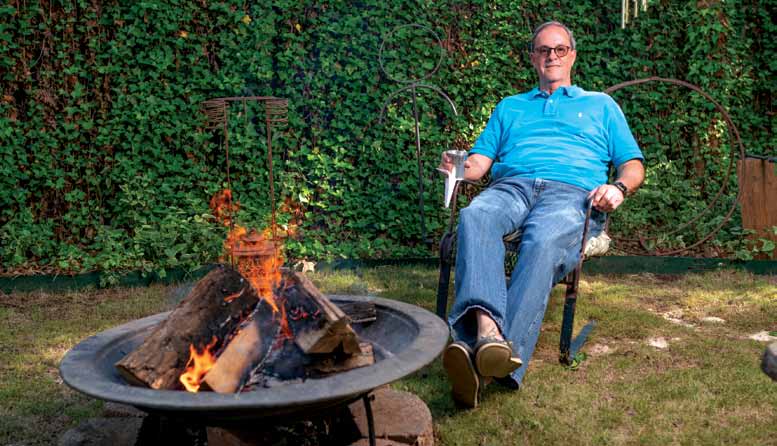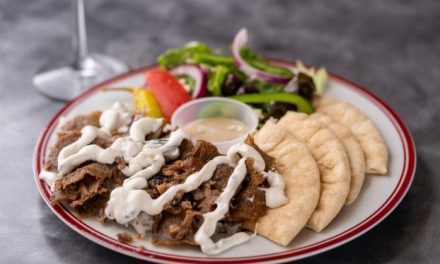By Richard George
PHOTOS BY JOSHUA BERRY
Growing up in Mississippi and raising Black Angus cattle was quite the blessing for me. I participated in the 4-H program in Macon, Noxubee County, Mississippi, where I raised and showed Angus steers.
My daily routine included exercising, grooming, training and feeding my calves before and after school. I gave them all the grain, protein, roughage and vitamins/minerals needed to grow and fatten up. The most satisfying thing for me was raising and showing cattle that won prizes and money. I also took great pride in knowing the quality and taste of the beef that was available for our family.
Quality beef is aged, tender and tasty. With proper preparation, USDA Choice grade steaks can be tender, juicy and flavorful. Try the meat counter at Costco for Choice grade filet mignon or splurge for the more costly Prime filet mignon. You can save some money by buying a beef tenderloin at Publix and have them cut it to your size preference. No matter what you choose, you will enjoy the outcome.
There are numerous ways to cook steaks. I want to share four ways with you that my family enjoys. One way is not necessarily any better than the others. It is all about personal preference, time restrictions and cooking equipment availability. Cookouts are fun. Give them a try and see for yourself.
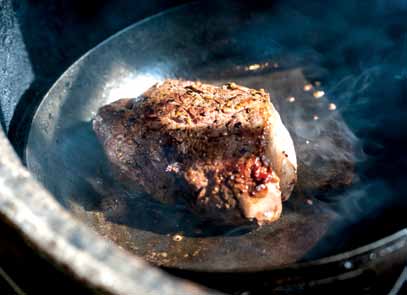
SLOW SMOKED
Marinate your steaks in Allegro Original Marinade or Moore’s Original Marinade for three to four hours in the refrigerator. Remove from marinade and pat dry with paper towels. Sprinkle with your favorite steak rub. Recently, a fellow Kansas City Barbeque Society judge introduced me to the Molpus family in Montgomery, who mix and bottle Hardin’s Seasonings. The 20-plus ingredients will truly enhance the flavor of a steak. See hardinsseasoning.com for details and availability.
Now, it’s not required, but many cooks like for the steaks to warm to room temperature before cooking.
Prepare charcoal fire for indirect heating; for Big Green Egg, convEGGtor legs up – and stabilize the temperature at 225-250 degrees. Add cherry wood chunks for a smooth smoky flavor. When the smoke turns to a thin blue smoke, you are ready to put your steaks on the grill.
Place your steaks on a clean grill without touching each other. Close the lid for 15 minutes, then open the lid and flip the steaks over for another 15 minutes. Repeat as needed, checking your internal steak temperatures with an instant-read thermometer. Flip until you reach your desired doneness: rare, 130 degrees, medium, 145 degrees, or well, 160 degrees. Remove from fire and lightly tent with aluminum foil to allow the steak to rest and redistribute the natural juices, approximately 10 minutes.
Our family really likes to add a special gorgonzola cheese sauce to cover these steaks. It takes at least an hour to make this sauce, so the granddaughters take turns carefully watching and occasionally stirring.
GORGONZOLA CHEESE SAUCE
Ingredients
4 cups heavy cream
4 oz. crumbled gorgonzola
3/4 tsp. kosher salt
3-4 Tb. grated parmesan cheese 3/4 tsp. fresh ground black pepper
Instructions
- Bring the heavy cream to a full boil in a medium saucepan over medium-high heat.
- Boil for approximately one hour until reduced to a thickened white sauce. Careful eyes with periodic stirring are required.
- Remove from the stovetop and add remaining ingredients. Mix together well.
- Add a dollop to the top of your steak.
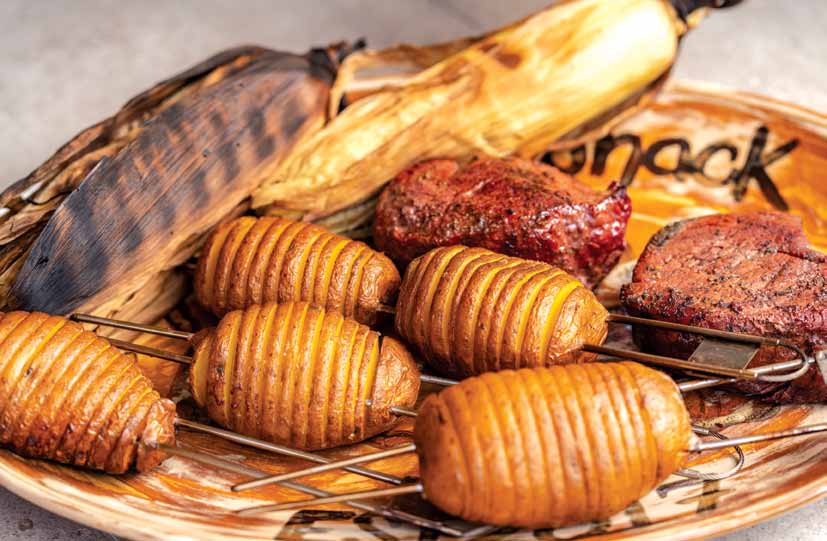
GRILLGRATES
A fast method of cooking is what most people do on a gas grill as well as on various metal charcoal grills. For many years, I cooked using Old Smokey, Weber and Char-Broil grills. For Christmas 2004, my wife and kids gave me a Big Green Egg, a kamado-style ceramic charcoal barbecue cooker/smoker. I am spoiled. Also, I use GrillGrates for this method of cooking. The aluminum, raised rails – sometimes called flavor bars – and valleys allow the juices to vaporize and prevent flare-ups.
Remove your steaks from the refrigerator, rub a little olive oil on all sides of the steaks and sprinkle both sides of each with kosher salt and freshly ground black pepper. You may allow your steaks to warm to room temperature while preparing the fire. Sometimes I like to wrap a piece of bacon around the edges to add some additional flavor and moisture!
Prepare your charcoal fire for direct heat. Add a couple of chunks of pecan wood to the fire, and when the fire burns evenly, insert the GrillGrates or your regular grill. This will get hot quickly.
Rub a little olive oil on the grate with a paper towel to keep steaks from sticking. Place your steak on the grill and lower the lid or cover.
For a 1-inch thick rare steak, 125 degrees, you’ll want to cook it five minutes on the first side and three more minutes after turning. For a 1.5-inch steak, cook six minutes and four minutes; for 2 inches, eight minutes and six minutes. For a medium rare, 135 degrees, steak of the same thicknesses, cook five minutes on the first side and four minutes after flipping; seven minutes and then six minutes; and nine minutes and seven minutes. For a medium steak, 145 degrees, go six minutes and four minutes for 1 inch; seven minutes and six minutes for 1.5 inches; or 10 minutes and eight minutes for 2 inches. For a well-done steak, 160 degrees, that would be eight minutes and six minutes; 10 minutes and eight minutes; and 13 minutes and 11 minutes, for each thickness.
My personal preference, however, is to lower the heat, close the cooking lid, reduce the time cooking on each side and flip more frequently. This not only allows me to better monitor the doneness but to enjoy the experience of grilling. When raising or removing the lid, you get to share the incredible smells of the grilling steaks.
Immediately after removing the steaks from the grill at your desired doneness, add a slice of butter to the top and lightly tent with aluminum foil for 5-10 minutes. Serve and enjoy!
HIMALAYAN SALT BLOCK
Marinate your steak in Allegro Original Marinade or Moore’s Original Marinade for three to four hours in the refrigerator. Remove from marinade and pat dry with paper towels. Sprinkle liberally with Hardin’s Seasoning and allow the steak to warm to room temperature while you prepare your fire.
Before heating on a salt block, it is important to make sure the block is fully dry and to slowly heat the salt block. I enjoy using my Big Green Egg, without the convEGGtor plate, and cooking over direct heat. Slowly increase the heat to a point where a water drop will vaporize and immediately disappear. If you have an infrared thermometer, this temperature will be approximately 500 degrees.
If you like a smoky flavor, simply add a couple of chunks of pecan wood and allow the smoke to turn to a thin blue smoke. You are now ready to cook.
Using metal tongs, place your steak on the salt block and close the lid for three to five minutes. Flip the steak and cook another three to five minutes. Closing the lid gives you a good smoky flavor. Continue this attentive, yet enjoyable, process until your steak reaches your desired doneness – 130 degrees for rare, 145 degrees for medium or 160 degrees for well done – using a ThermoPro TP15 Instant Read Meat Thermometer or similar quick-read thermometer.
After carefully removing the steak from the salt block, add a slice of butter and lightly tent the steak with aluminum foil. Allow it to rest and redistribute those wonderful natural juices for approximately 10 minutes. Serve and enjoy!
Caution: After removing the salt block from the fire and allowing it to completely cool, scrape if needed then clean with water only. Never use soap on a salt block.
SOUS-VIDE
This is a method of cooking in which food is placed in an airtight pouch, like a zip-top plastic bag, and cooked in a water bath for a longer than usual cooking time and at an accurately regulated temperature. The purpose is to cook the steak evenly and to retain the moisture of this meat.
I purchased a VIVA Sous-Vide Cooker, a relatively inexpensive model, to experiment with. Fill your 8-12-quart storage container with enough water to completely submerge the airtight pouch containing your steak. You can combine up to two steaks in a pouch. Set the water circulator temperature and time as follows:
Approximately 30 minutes before the time is up, prepare a very hot fire for direct cooking. Carefully remove the pouch from the hot water when the cooking time has transpired. Remove the steak from the pouch and pat dry. Heat a cast iron skillet until it is extremely hot. Add a drizzle of oil and a good pat of butter to the skillet. Place the steak in the hot skillet and sear each side for one to three minutes for a nice crust. Remove the steak and allow to rest under a loosely tented piece of aluminum foil. Serve and enjoy!
GRILL MARKS OR CROSSHATCH
To achieve the crosshatch revered by many cooks, use a regular grill or GrillGrates. Lay your steak on a heated grill with ends of the steak in the 6 and 12 o’clock positions. When you see a little char, lift the steak – don’t flip it over yet – and rotate counterclockwise to a slightly different area of grill at the 4 and 10 o’clock positions. When you see some char, lift and flip the steak over and return to a different area of grill.
You are looking for hot spots on the grill to create those cross marks.
Repeat the same turning degree process, approximately 40 degrees rotation. So that’s lift/rotate, lift/flip, lift/rotate, lift and remove from grill. Check your internal temperatures for your desired degree of doneness. Tent loosely in aluminum foil for 10 minutes to allow natural juices to be redistributed throughout steak. Have fun and enjoy!
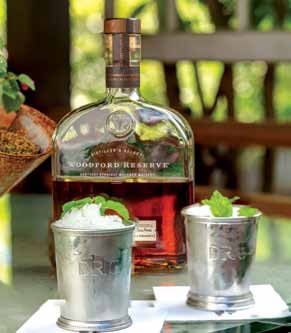
RELAXING LIBATIONS:
BOURBON OR WINE
The Kentucky Derby Official Mint Julep is a simple drink, made with 3 oz. Woodford Reserve Bourbon, 2 Tb. mint simple syrup and 1 sprig mint. Fill a Silver Mint Julep cup with crushed ice, add the bourbon and mint syrup and stir gently until glass is thoroughly chilled. Garnish with the mint sprig. Some folks like to use a short straw so that when you sip, you get to enjoy that minty aroma.
Lara Isbell, wine director of Liquor Express/The Open Bottle has a couple of recommendations for those who prefer wine. For a white wine, consider Alexander Valley Vineyards Chardonnay 2018 Wetzell Family Estate, a light- to medium-bodied, peach, cut hay and fruity wine. For a red wine, she suggests the Roth Estate Heritage Red Blend 2016, a medium- to full-bodied, black cherry jam and vanilla with a fruity flavor. Both are sure to pair well with your filet mignon.
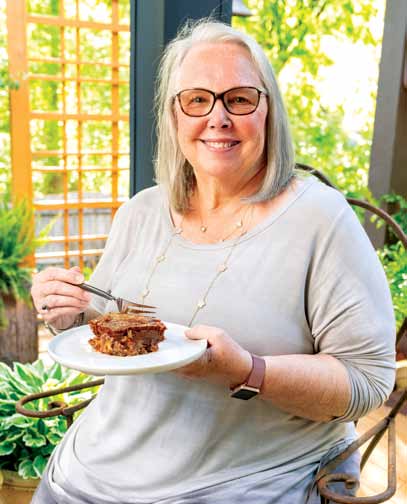
DESSERT BY GAYLE
My wife Gayle is an awesome cook and was quick to suggest her delicious Earthquake Cake for this meal. It might be difficult to envision this treat, but it’s well worth your endeavor.
Ingredients
1 cup shredded coconut
1 cup chopped pecans
1 box of German Chocolate cake mix
8 oz. cream cheese
1 box of powdered sugar
Instructions
- Spray a 9×13-inch baking pan with nonstick cooking spray.
- Sprinkle the shredded coconut onto the bottom of the pan and cover with the chopped pecans.
- Mix the cake according to directions on the box and pour over the coconut and pecans.
- Melt the cream cheese in a saucepan over medium heat; add powdered sugar and mix until smooth and thin. Drizzle over
unbaked cake. - Preheat oven to 350 degrees and bake for 45 minutes or until the cake is firm.
Please note that no sponsorships are involved or any monetary compensation provided to me by any named brands or merchants. I just love to cook and eat – and share our ideas with you.
